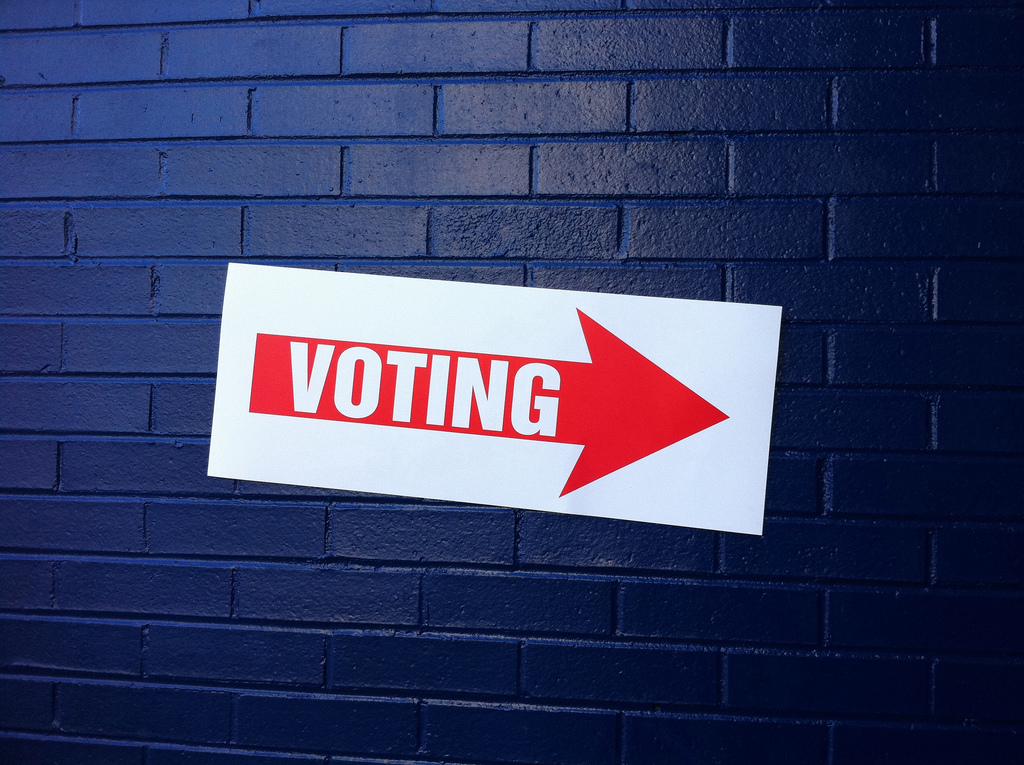In 2012, only 53.6% of America’s eligible voters turned out to vote in the presidential election. By an international standard, this is an abysmally low rate; 31st on Pew Research Center’s list ranking 35 developed countries in voter turnout. Belgium, Turkey, and Sweden rank on the same list have turnout rates in the high 80s.
The U.S. continually struggles to get its population to the polls. The irony of this situation is evident: in a country that claims to set an example for democracy and equal representation, key decisions are being determined by less than half of its people.
As everyone who has paid the slightest attention to anything happening around them in the past year knows, the 2016 Presidential election in on Tuesday, November 8, in less than two weeks. The Paper Tiger strongly encourages all of Lick’s eligible voters (this means 18 and over – high school seniors and faculty, we’re looking at you) to get to the polls and make your voices heard. Fulfill your right and obligation as American citizens. Sadly, high school does not offer courses such as “How to Cast a Vote” or “Paying Taxes 101,” so, to make things easier, we offer a set of instructions for how to go about voting and what to expect when you do. (This is a continuation of the article on registering to vote.)
Guide to How to Cast Your Vote:
First, you must make sure to register to vote online (see previous article) – the last date this was possible was October 24. Still, if you missed the date, get yourself registered so that you can participate in the next scheduled election — local, state, or natonal.
After you register, a guide to all of the candidates and the propositions or other initiatives on the ballot will be mailed to you.
If you chose to be a vote-by-mail voter, a ballot will be mailed to you — and will arrive at least a week before the election. All you have to do is fill it out and mail it back prior to the election, though you must make sure that your ballot is postmarked by Election Day and is received by your county election office not more than three days after the election.
You can also drop your ballot off in person at City Hall, Room 48, during the hours indicated on sfgov.org. It is vital that you make sure to sign the back of the yellow return mailing envelope in the box provided or your vote will not be accepted.
If you do not wish to vote by mail, you can choose to vote at your local polling station instead. Polling stations are set up by district around the city and will be open on Election Day, November 8, from 7 a.m. until 8 p.m. To find your polling station, go to the SF Elections website and enter your address to determine the location of where you should go to cast your ballot. This station will often be located inside a local school or community center; the website will give you directions how to get there.
Before you vote, make sure you are informed about what is on the ballot and have made your decisions about how you plan to vote. Your vote is important, and you want to make sure you know everything possible about the issues on which you make your voice heard. Read the guide to the election mailed to you by the Election Board. In addition, many reputable non-partisan organizations offer guides to the election: for example KQED has an election and informative guide to the elections online at http://votersedge.kqed.org/.
This November, all of these items will be on the ballot:
Party-nominated offices
- President and Vice President of the United States
Voter-nominated offices
- United States Senator
- United States Representative in Congress, Districts 12 and 14
- State Senator, District 11
- Member of the State Assembly, Districts 17 and 19
Nonpartisan offices (local, except BART)
- Judges of the Superior Court Office No. 7
- Member, Board of Education
- Member, Community College Board
- BART Director, Districts 7 and 9
- Member, Board of Supervisors, Districts 1, 3, 5, 7, 9, and 11
State and local ballot measures
You can find sample ballots on the SF Elections website to familiarize yourself with all the phrasing, candidates, and legislature. The candidate’s party will always be listed beneath their name. Make sure you bring a pen with black or dark blue ink or a #2 pencil; these are the only writing implements permitted for the ballot.
Once you have arrived at your polling station, you may be required to wait in line for a while. Make sure you have allotted yourself enough time to cast your vote. When it is your turn to vote, you will receive a paper ballot unless you request to use an accessible voting machine. If you choose to use the machine, it will provide you with instructions as to how to proceed.
Once you receive your paper ballot, read the printed instructions. In each contest, make sure you only vote for the correct number of candidates; if you accidentally mark your ballot to vote for more candidates than allowed, your vote for that contest will not be counted. If you do not want to vote on a certain contest or measure, leave that contest or measure blank. Your votes for the other contests and measures will still count. For more detailed instructions on how to rank multiple choice votes and how to do write-ins, visit http://voterguide.sfelections.org/en/how-vote.
Cast your ballot and reward yourself! You’ve just voted for (if you’re a senior in high school) the first time!
We hope all of you get out there on November 8 – your voice matters.







